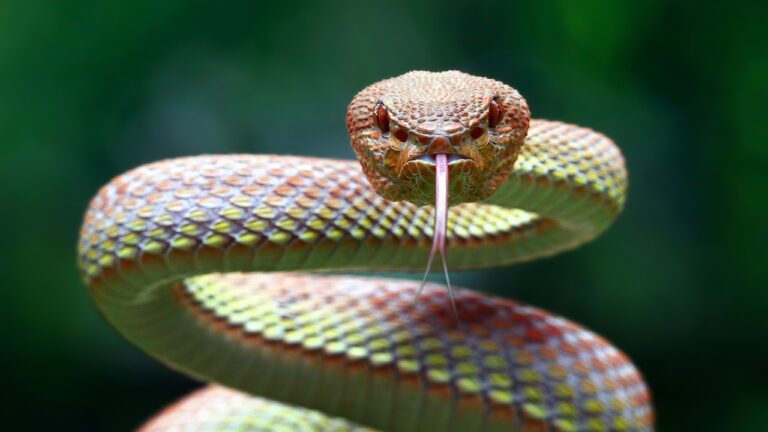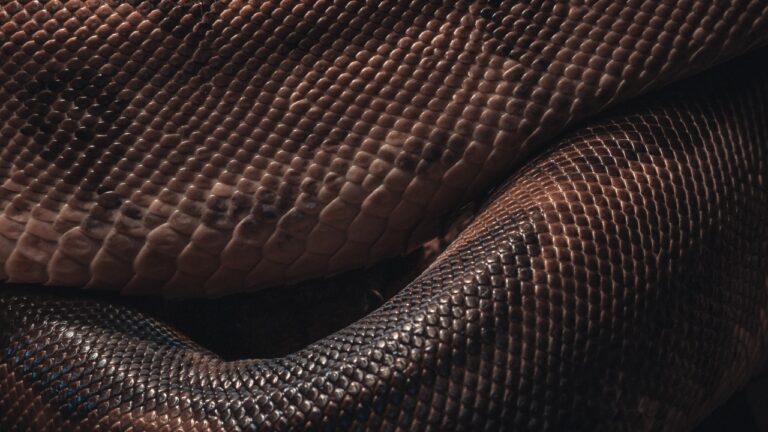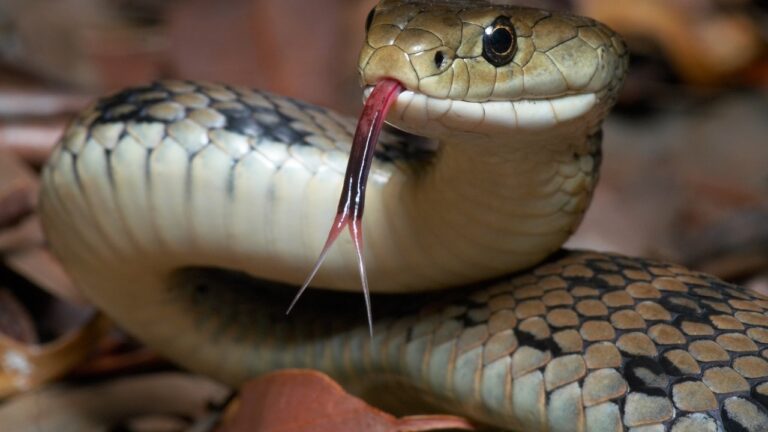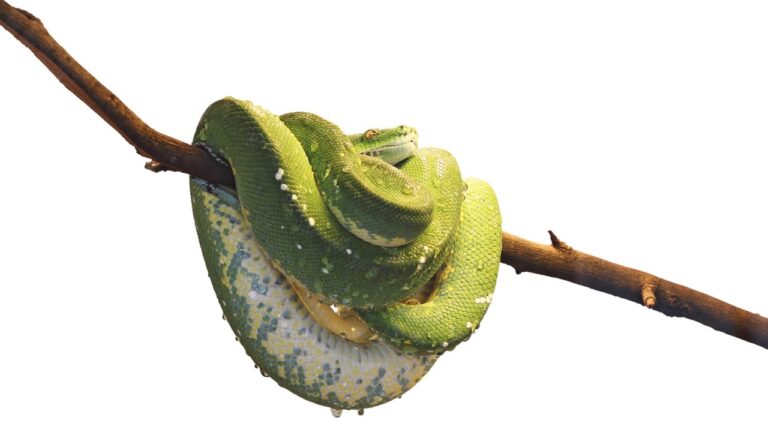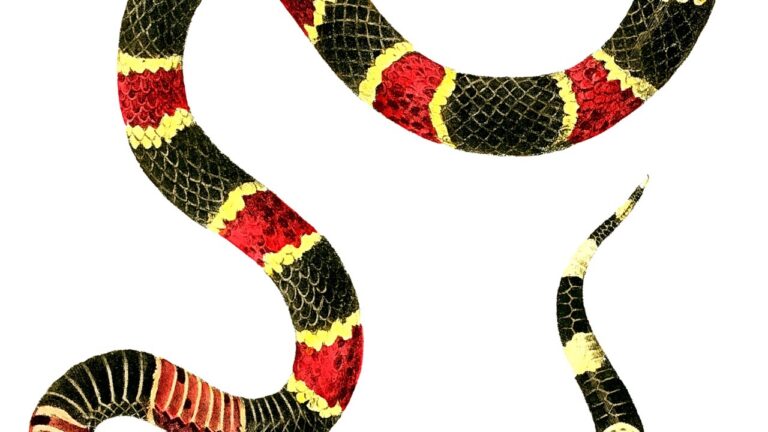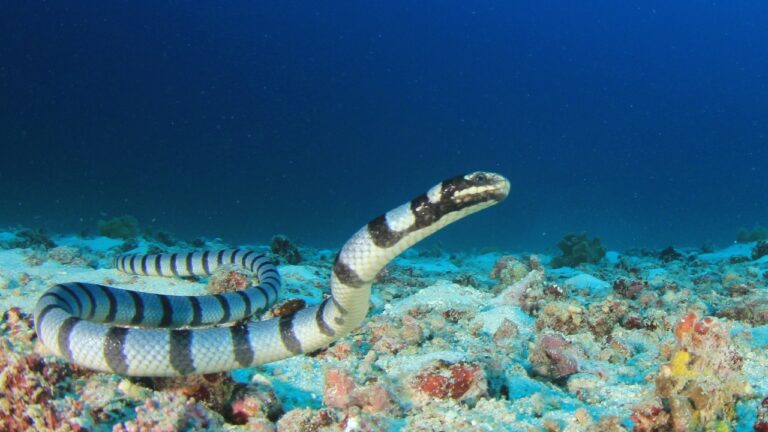Preparing Live Snake Food: A Guide for Enthusiasts
Overview of Preparing Live Snake Food
When it comes to caring for snakes as pets, providing them with a proper diet is crucial for their health and well-being. While some snakes can be fed with commercially available snake diets, many snake enthusiasts prefer to feed their reptilian companions with live food. Preparing live snake food not only allows for a more natural feeding experience but also ensures that the snakes receive the necessary nutrients to thrive.
In this comprehensive guide, we will delve into the world of live snake food, covering the different types of prey commonly used, establishing a feeding schedule, and exploring various safety considerations. Whether you are a seasoned snake owner or a beginner looking to learn more about this fascinating aspect of snake care, this article will provide you with valuable insights and practical tips to enhance your knowledge.
Before we dive into the nitty-gritty details, it’s important to note that the well-being of the snakes should always be the top priority. Responsible snake owners should ensure that the prey they provide is of high quality, nutritionally balanced, and ethically sourced. With that in mind, let’s explore the various aspects of preparing live snake food, starting with an overview of the different types of prey commonly used.
Table 1: Types of Live Snake Food
| Type of Prey | Examples |
|————–|———-|
| Rodents | Mice, Rats|
| Birds | Chicks, Quails|
| Reptiles | Lizards, Frogs|
| Insects | Crickets, Mealworms|
Note: Always check the specific dietary requirements of your snake species before selecting the appropriate live food.
Now that we have a general understanding of the types of live snake food available, let’s delve deeper into each category in the following sections.
Types of Live Snake Food
When it comes to feeding your slithering companions, there are various options to choose from. Rodents, birds, reptiles, and insects all make excellent choices for live snake food. Each type of prey offers its own unique benefits and considerations, ensuring a well-rounded diet for your snake.
Rodents, including mice and rats, are among the most commonly fed live prey. These small mammals provide a good source of protein and are readily available from reputable snake food suppliers. Mice and rats come in different sizes, allowing you to match the prey to the size and appetite of your snake. It’s important to note that some snake species prefer mice over rats, while others may require larger rodents for a satisfying meal. If you’re unsure about the best options for your snake, consult a snake diet specialist for guidance.
For those looking to diversify their snake’s diet, birds such as chicks and quails can be a great alternative. Birds offer a different texture and taste, providing enrichment for your snake’s feeding experience. Chicks and quails are typically available in various sizes, making it easy to select the appropriate prey for your snake’s size and age. Just like with rodents, it’s crucial to consider the specific dietary requirements of your snake species when incorporating birds into their meals.
If you’re looking to introduce some excitement into your snake’s diet, consider offering reptiles as live food. Lizards and frogs can be an interesting and challenging prey option for certain snake species. Not only does this mimic the natural feeding behavior of wild snakes, but it also provides mental stimulation for captive snakes. However, it’s important to ensure that the reptiles you offer as prey are safe and suitable for your snake’s consumption. Always consult a reptile specialist to determine the best reptile options for your snake’s diet.
For those with small or hatchling snakes, insects can be an ideal choice for live snake food. Crickets and mealworms are commonly used as nutritious and easily digestible prey. These small critters are packed with protein and can be purchased from snake food suppliers or even bred at home. Insects can be a convenient option for snakes that require frequent feedings due to their small size and availability.
It’s essential to remember that not all snake species have the same dietary needs. Some snakes may thrive on a diet consisting primarily of rodents, while others may benefit from a more varied menu. Always consider the specific requirements of your snake species when selecting live food options.
In the next section, we will delve into the importance of establishing a feeding schedule and determining appropriate portion sizes for your snake’s specific needs. Stay tuned for valuable insights on how to ensure your snake receives a well-balanced diet that promotes optimal health and growth.
Recommended reading: Looking for more information on snake diets? Check out our article on snake food preparation for tips and tricks on creating nutritious meals for your scaly companion.
Feeding Schedule and Portion Sizes
When it comes to feeding your beloved snakes, establishing a proper feeding schedule and understanding the appropriate portion sizes are crucial for their health and well-being. Snakes, like any other living creature, require a balanced diet to thrive in captivity. In this section, we will delve into the art of determining the right feeding schedule and the significance of portion sizes for different snake species.
Determining the Right Feeding Schedule
Establishing a consistent feeding schedule is of utmost importance for the overall health and happiness of your scaly companions. Snakes thrive on routine, and having a set schedule helps them adjust to a predictable feeding pattern.
The frequency of feeding depends on various factors, such as the species, age, size, and metabolism of your snake. Generally, most snakes should be fed once every 5 to 14 days, with younger snakes requiring more frequent meals. However, it is crucial to research the specific dietary requirements of your snake species to ensure you are providing the optimal feeding schedule.
Monitoring your snake’s behavior and body condition can also guide you in determining the appropriate feeding frequency. If your snake appears healthy and maintains a steady weight, your current feeding schedule is likely suitable. However, if your snake becomes lethargic, loses weight, or refuses food consistently, it may be a sign that you need to adjust the feeding schedule. Always remember that each snake is unique, and individual adjustments may be necessary.
Understanding Portion Sizes for Different Snake Species
Just as portion sizes vary for humans depending on age, size, and activity level, the same principle applies to snakes. Each snake species has its own dietary requirements, and understanding the appropriate portion sizes is essential for maintaining their overall health.
Young snakes typically require smaller prey items compared to their adult counterparts. As they grow, their prey size should gradually increase to accommodate their changing nutritional needs. It is crucial to monitor your snake’s growth and adjust the portion sizes accordingly to prevent underfeeding or overfeeding.
To determine the appropriate portion size, you can refer to the general rule of thumb: the prey item should be roughly equal to the snake’s girth at its widest part. This guideline ensures that your snake is receiving an adequate amount of nutrients without overindulging.
Additionally, it is vital to consider the nutritional content of the prey item. Different prey items, such as rodents, birds, reptiles, and insects, offer varying levels of essential nutrients. Researching the specific dietary needs of your snake species will help you tailor their portion sizes to provide a well-balanced diet.
Remember, portion sizes play a crucial role in maintaining your snake’s health, so it is essential to find the right balance. If you are unsure about the appropriate portion sizes for your snake, consult a reptile veterinarian or knowledgeable snake enthusiast for guidance.
In the next section, we will explore the ins and outs of preparing live snake food, including sourcing live food, proper handling and storage techniques, ensuring nutritional value, and humane practices.
Continue reading: Preparing Live Snake Food: A Guide for Enthusiasts
Preparing Live Snake Food
When it comes to feeding your slithery friends, preparing live snake food requires careful consideration and attention to detail. It is essential to ensure that your snakes receive the proper nutrition they need to thrive in captivity. In this section, we will explore the key aspects of preparing live snake food, including sourcing, handling, storage, nutritional value, and humane practices.
Sourcing Live Food
Finding a reliable source of live food is crucial for maintaining the health and well-being of your snakes. SerpentSuppliers, a reputable online platform, offers a wide range of live food options for snakes, including rodents, birds, reptiles, and insects. By choosing a trusted supplier, you can have peace of mind knowing that the live food provided is of the highest quality and free from any potential diseases or parasites.
Proper Handling and Storage
Once you have obtained the live food for your snakes, it is essential to handle and store it correctly to maintain its freshness and quality. This involves ensuring that the food is kept in a clean and hygienic environment, free from any contaminants that could harm your snakes. SerpentSuppliers provides detailed guidelines on proper handling and storage techniques, ensuring that your live snake food remains safe and nutritious.
Ensuring Nutritional Value
The nutritional value of live snake food is vital for the overall health and vitality of your snakes. Different snake species have varying dietary requirements, and it is essential to understand and meet these needs to ensure their well-being. SerpentSuppers offers a comprehensive guide on snake diets, including information on the specific nutritional requirements of various snake species. By referring to this resource, you can ensure that your snakes receive a balanced and nutritious diet.
Humane Practices
As responsible snake owners, it is crucial to prioritize the welfare and ethical treatment of the live food you provide. SerpentSuppliers advocates for humane practices in sourcing and handling live snake food. This includes ensuring that the live food is treated with respect and compassion throughout the entire process. By adopting humane practices, you can contribute to the overall well-being of both your snakes and the live food they consume.
In conclusion, preparing live snake food requires careful attention to detail and a commitment to providing the best possible nutrition for your snakes. By sourcing from reputable suppliers, handling and storing the live food properly, ensuring its nutritional value, and practicing humane methods, you can ensure the health and longevity of your slithering companions.
For more information on snake feeding tips, snake food suppliers, and homemade snake food recipes, visit SerpentSuppers. They offer a wealth of resources to assist you in your snake feeding endeavors.
Safety Considerations
When it comes to feeding live food to your snakes, ensuring safety should be your top priority. This section will cover important safety considerations including hygiene and cleanliness, avoiding contamination and illness, and proper feeding techniques.
Hygiene and Cleanliness
Maintaining a high level of hygiene and cleanliness is crucial when preparing live snake food. This not only ensures the health of your snakes but also minimizes the risk of contamination. Here are some key points to keep in mind:
-
Sanitization: Before handling live food, it is essential to wash your hands thoroughly with soap and warm water. This helps eliminate any potential bacteria or pathogens that may be present on your hands.
-
Cleaning Tools and Equipment: Regularly clean and disinfect all tools and equipment used in the preparation and handling of live snake food. This includes feeding tongs, containers, and any surfaces that come into contact with the food.
-
Storage: Properly store live food in clean and sanitized containers, away from any potential sources of contamination. Regularly clean and disinfect the containers to prevent the buildup of bacteria or mold.
Avoiding Contamination and Illness
Contamination and illness can pose serious risks to the health of your snakes. To minimize these risks, follow these guidelines:
-
Source of Live Food: Ensure that the live food you provide to your snakes comes from reputable suppliers. Look for suppliers that prioritize the health and well-being of their feeder animals.
-
Quality Control: Inspect the live food before feeding it to your snakes. Avoid using any food that shows signs of illness, injury, or parasites. Always prioritize the health of your snakes by providing them with the highest quality food.
-
Isolation: Keep the live food separate from your snakes until feeding time. This helps prevent any potential cross-contamination and reduces the risk of introducing pathogens or parasites to your snakes’ enclosure.
Proper Feeding Techniques
Proper feeding techniques play a vital role in ensuring the safety and well-being of your snakes. Here are some important tips to consider:
-
Feeding Enclosure: Create a designated feeding area within your snakes’ enclosure. This helps minimize stress and ensures that the snakes associate that area with feeding time.
-
Appropriate Prey Size: Choose prey that is an appropriate size for your snake’s species and age. Feeding prey that is too large can lead to regurgitation or digestive issues, while prey that is too small may not provide sufficient nutrition.
-
Observation: After feeding, closely observe your snakes to ensure that they successfully swallow and digest the prey. If you notice any signs of regurgitation, difficulty swallowing, or prolonged digestion, consult a veterinarian for guidance.
By following these safety considerations and implementing proper hygiene practices, you can provide your snakes with a safe and healthy feeding experience. Remember, safety should always be a priority when it comes to the well-being of your reptilian companions.
Next, let’s explore some alternative feeding options, such as frozen and thawed prey, as well as commercial snake diets, in case live food is not suitable or available. Stay tuned!
Internal links:
Alternative Feeding Options
While live prey is often the preferred choice for feeding snakes, there are alternative options available that can provide the necessary nutrition for your slithering companion. Two popular alternatives include frozen and thawed prey and commercial snake diets.
Frozen and Thawed Prey
Frozen and thawed prey, sometimes referred to as pre-killed prey, is a convenient and safe option for feeding snakes. It offers several advantages over live prey, including reduced risk of injury to your snake and the ability to store prey for longer periods.
To feed your snake frozen and thawed prey, simply purchase the appropriate size and type of prey from reputable snake food suppliers. These pre-packaged prey items are typically rodents, such as mice or rats, that have been humanely euthanized and then frozen.
To prepare the prey for feeding, thaw it by placing it in a sealed bag and allowing it to defrost in the refrigerator. It is important to ensure that the prey is completely thawed before offering it to your snake. Using tongs or forceps, present the prey to your snake as you would with live prey, mimicking natural hunting behavior.
It is essential to note that frozen snake food should never be thawed using methods such as a microwave or boiling water, as this can lead to uneven heating and potential loss of nutritional value. Thawing prey naturally in the refrigerator is the safest and most effective method.
Commercial Snake Diets
Commercial snake diets are another alternative feeding option for snakes. These diets are formulated to provide a complete and balanced nutritional profile for your snake, ensuring that they receive all the essential nutrients they need to thrive.
Snake food manufacturers have developed a range of commercial diets that cater to different snake species and sizes. These diets often come in the form of pelleted or powdered food that can be easily mixed with water to create a paste or slurry.
When feeding your snake a commercial diet, it is crucial to follow the manufacturer’s instructions regarding portion sizes and feeding frequency. Some snake diets may require additional supplementation to ensure that your snake is receiving all the necessary nutrients. Consulting with a reptile veterinarian can help ensure that you are providing the best diet for your snake’s specific needs.
While commercial snake diets offer convenience and the assurance of balanced nutrition, it is essential to remember that they should not be the sole source of food for your snake. Variety in a snake’s diet is important to mimic their natural feeding habits and provide enrichment.
In conclusion, frozen and thawed prey and commercial snake diets are viable alternatives to live prey when it comes to feeding snakes. These options offer convenience, safety, and balanced nutrition for your scaly friend. Remember to choose reputable suppliers and consult with a reptile veterinarian to ensure that you are providing the best diet for your snake’s overall health and well-being.
For more information on snake diets and feeding tips, be sure to check out our articles on snake diet and feeding snakes.
Conclusion
In conclusion, preparing live snake food requires careful consideration and knowledge of the specific dietary needs of your slithering companions. By understanding the types of live snake food available, determining the appropriate feeding schedule and portion sizes, and following proper preparation and safety guidelines, you can ensure the well-being and nutritional needs of your snakes are met.
When it comes to sourcing live food, it is essential to find reputable snake food suppliers who prioritize the health and welfare of the prey animals. Additionally, proper handling and storage techniques play a crucial role in maintaining the freshness and quality of the live food. Remember to prioritize hygiene and cleanliness to avoid contamination and illness.
Ensuring the nutritional value of live snake food is vital for the overall health and vitality of your snakes. By offering a varied diet that includes a combination of rodents, birds, reptiles, and insects, you can provide a balanced and natural diet for your snakes. However, keep in mind that different snake species have unique dietary requirements, so it’s crucial to understand the specific needs of your snakes.
While live snake food is the most natural option, there are alternative feeding options available. Frozen and thawed prey, for example, can offer a convenient and safe alternative to live food. Commercial snake diets, on the other hand, provide a formulated and balanced nutritional profile for snakes. However, it’s important to note that these alternatives may not fully replicate the natural feeding behaviors and instincts of snakes.
In conclusion, feeding snakes is a responsibility that requires knowledge, care, and attention to detail. By following the guidelines and tips outlined in this article, you can ensure that your snakes receive the best possible nutrition while maintaining their overall well-being. If you’re interested in exploring more about snake diets, feeding schedules, or even homemade snake food recipes, be sure to check out our website for additional resources and information. Happy feeding!
Note: The content provided in this article is for informational purposes only and should not replace professional veterinary advice. Always consult with a qualified reptile veterinarian for personalized guidance on your snake’s specific dietary needs.


